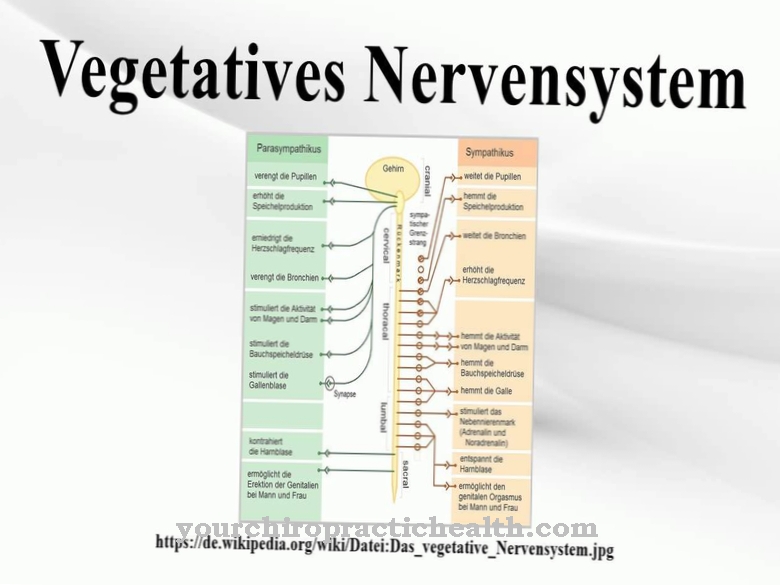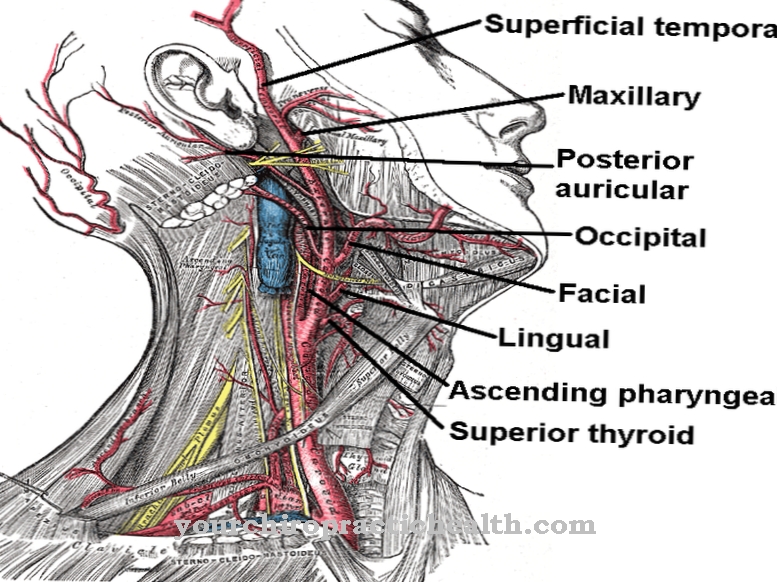tears are mostly only noticed in certain situations in which people become emotional and cry. They also take on important functions and are always present in a healthy eye.
What are tears
At tears it is a liquid that is produced in the tear glands. They form a thin layer that covers the cornea. The so-called tear film has numerous tasks and functions. The tear fluid is evenly distributed in the eye and separates the cornea and eyelid from each other.
People blink every four to six seconds. With the blink of an eye, the tear fluid enters the eye as a lubricant. Before dry spots can appear, new tears are formed and these are distributed by blinking again. For example, it is possible to protect the eye from infection and pain due to a dry cornea.
The tear film consists of several layers that are structured differently. In addition, it does not measure the same thickness in different regions of the eye. Different diseases influence tear production and lead to different complaints.
composition
The various ingredients are produced in differentiated glands. The basic production of an adult is 1.2 microliters per hour. If the eye is exposed to certain stimuli, more tears are formed. Tears consist of about three components that are present in layers within the eye. First, some glands produce mucus. This is also called a mukus.
It ensures that the cornea becomes slippery. This is the only way that the following layer of water can adhere to the eye. Otherwise the tear film would roll off. The middle layer follows the mucin layer. This is made up of salty water and is responsible for most of the positive effects of tears. In the event of a stimulus, only this layer is increasingly produced in the large tear glands.
The last layer of the tear film consists of lipids. If the thin layer of fat is bumpy or other symptoms are present, vision is impaired. The lipid layer is produced by the meibomian glands and at the same time forms the outer layer of the tear film. So that the functions of the tear film can be guaranteed, the layers must be optimally coordinated. As soon as unevenness appears in a layer, complaints of various kinds usually arise.
Function & tasks
Tears have different roles. In emotional situations, people often find crying to be a relief. Various emotional stimuli can lead to increased tear production. People not only cry out of grief, but also out of anger, despair, overwhelming demands or pity. So far, scientists have not been able to reconstruct the exact process.
So it is not known why people cry. The theory that crying protects against depression has also not been empirically proven. However, the function of tears in the eye is scientifically recognized. The thin film of tears protects the cornea from gusts of wind and pathogens such as viruses and bacteria. The tears clean the conjunctival sac and the outer cornea regularly.
In addition, the tears function as a lubricant between the eye and the skin of the eyelid. This is the only way to blink smoothly. When foreign objects get into the eye, more tears are produced to remove them. The middle layer of the tear film is particularly decisive in the process. In addition, it keeps the eye constantly moist and supplies the cornea with important substances.
These include, among other things, oxygen. The defense substances, which prevent the penetration of bacteria and other pathogens, are also located in the water layer. In addition, tears play an important role in vision. They help to ensure that the light can be optimally refracted. Especially if the outer layer is not smooth or has gaps, putting on the glasses does not help to optimize eyesight.
You can find your medication here
➔ Medicines for eye infectionsIllnesses & complaints
Tears are usually only noticed in everyday life when the body does not produce enough of them. Various factors, such as heating air or cigarette smoke, can dry out the eyes. A change in the composition of the tear film is fundamental for dry eyes. If the composition or quantity is disturbed, the protective surface is no longer available.
The layers build on each other. If one of them is of poor quality or the quantity does not blend in optimally, the stability and smoothness of the entire tear film are at risk. Instead, there are cracks and dry spots that are no longer surrounded by the tears. Numerous complaints result from dry eyes. Causes of impaired tear production can be various eyelid diseases and eyelid inflammation.
This is often caused by an infection with bacteria. The sebum is affected by eyelashes. Tumors, misalignments, inflammations and cosmetic problems such as cysts of the eyelid come into question as lid diseases. Correction of the symptoms mentioned can be suitable for treating dry eyes.
If no disease-related factors could be determined, artificial eye drops that have to be used at regular intervals can help. It's not uncommon for dry eyes to turn into a chronic process. In addition to dry eyes, there can also be an increased production of the water layer.
Watery eyes are caused by different mechanisms. These include, for example, a disorder of tear drainage. In addition, there may be an overproduction of tears or changes in the tear ducts. In women in particular, watery eyes occur as part of hormonal changes, such as during menopause. In the case of temporary overproduction, inflammation of the large lacrimal gland is possible.












.jpg)



.jpg)










.jpg)
